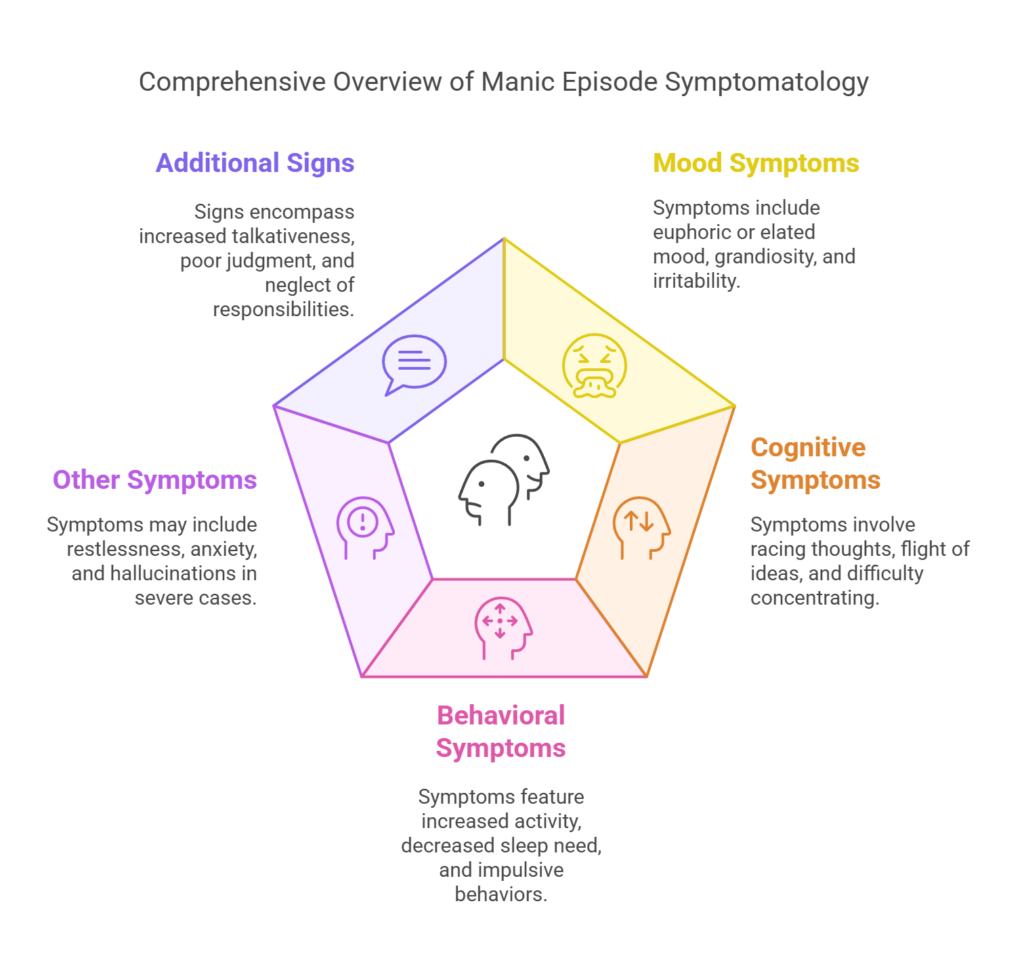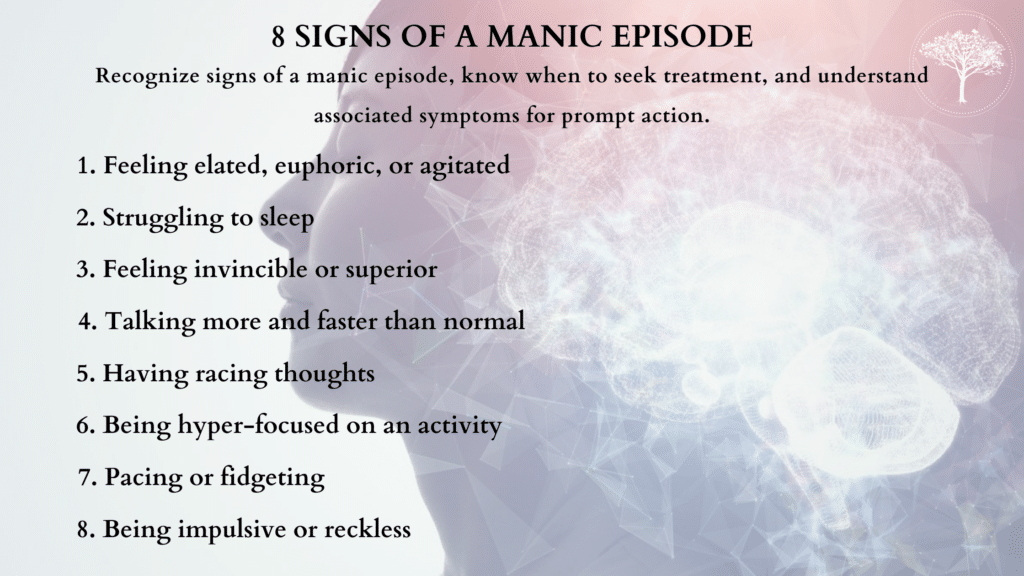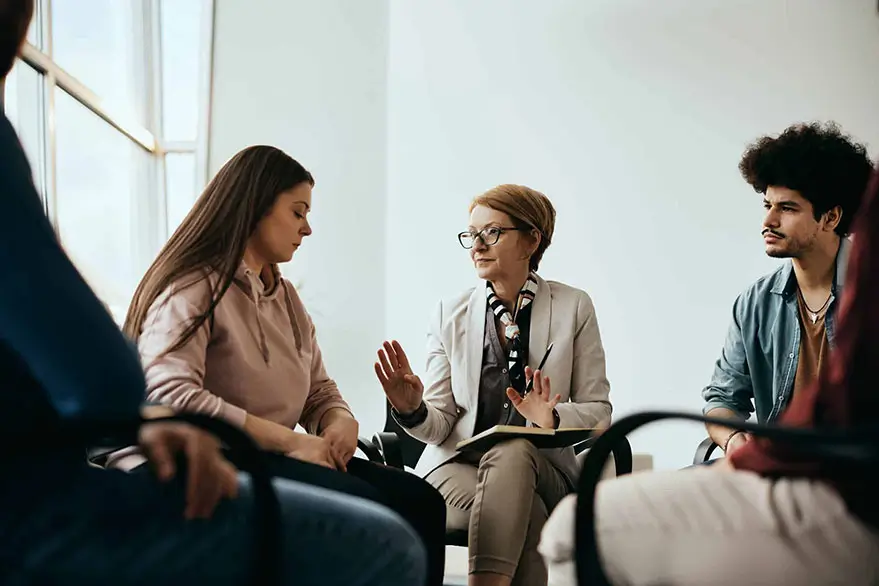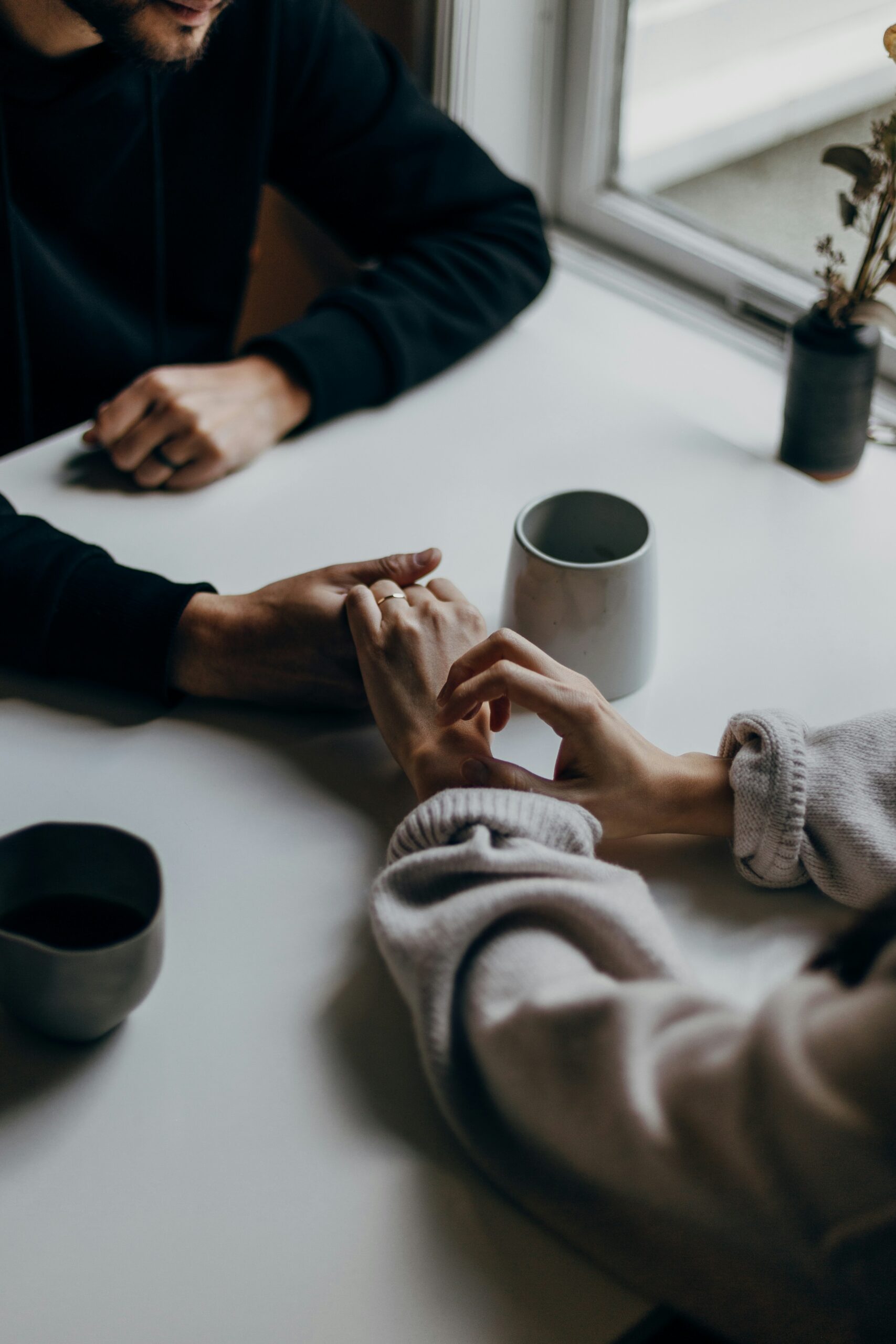Bipolar Disorder is a mental health condition that afflicts millions of individuals around the world. It is characterized by dramatic changes in mood, ranging from manic to depressive, and can significantly affect an individual’s day-to-day functioning. It is important to be aware of the signs and symptoms associated with bipolar disorder and to seek professional help if they appear to be more severe than normal. This article will provide an overview of the various types of Bipolar Disorder, the most common symptoms, the treatment options available, and how long does bipolar episode last.
Overwhelmed by Depression and Mania?
What is Bipolar Disorder?
Bipolar disorder (formerly referred to as manic depression) is a mental health condition characterized by intense fluctuations in mood. These fluctuations can take the form of manic episodes, characterized by high levels of energy, and depressive episodes, characterized by low levels of mood. Both men and women may develop bipolar disorder in their teens or early adulthood.
Understanding Bipolar Episodes: How Long Do They Typically Last?
Are you or a loved one experiencing bipolar episodes and wondering how long they typically last? Understanding the duration of bipolar episodes is essential for managing the condition effectively. In this article, we will explore the duration of bipolar episodes and provide insights into what to expect.
Bipolar disorder is a mental health condition characterized by extreme shifts in mood, energy levels, and activity levels. These shifts, known as episodes, can be categorized as manic episodes, hypomanic episodes, or depressive episodes. The duration of these episodes can vary from person to person.
Manic episodes are characterized by an elevated and irritable mood, increased energy, and impulsive behavior. On average, manic episodes can last for about a week, but they can range from a few days to several months.
Hypomanic episodes are less severe than manic episodes but can still cause significant disruptions in daily life. They typically last for a few days to a few weeks.
Depressive episodes are marked by a persistent feeling of sadness, loss of interest, and decreased energy. These episodes can last for weeks, months, or even years.
Understanding the typical duration of bipolar episodes can help individuals and their loved ones better cope with the condition and seek appropriate treatment. Join us as we dive deeper into this topic and provide valuable insights into managing bipolar disorder effectively.
What are the Different Types of Bipolar Disorder?
Bipolar disorder is a spectrum of mental health conditions, and it is important to be aware of the distinctions between them in order to accurately diagnose and manage the condition. Bipolar disorder is classified into two main categories: Bipolar Disorder Type (BDR) 1 and BDR Type 2.
What is Bipolar Disorder Type 1?
Bipolar disorder type 1 is characterized by manic episodes, which typically last for a minimum of seven days, or are severe enough to necessitate hospitalization. Such manic episodes may result in risky behavior, including spending impulsively or engaging in substance abuse. Additionally, depressive episodes may occur, typically lasting for a minimum of two weeks.
What is Bipolar Disorder Type 2?
Bipolar disorder type 2 is characterized by depressive episodes, as well as a subliminal state known as hypomania, which is less intense than a manic episode. Hypomania can lead to an increase in energy and creativity but does not result in dangerous behavior as a manic episode does.
What is bipolar I or II disorder with mixed features?
Bipolar disorder is a condition where your mood changes from day to day, and you have symptoms that are either high or low. Mixed Features are when you have both high and low symptoms at the same time or in a fast-paced pattern.
What is Cyclothymic Disorder?
Cyclothymic disorders are mild forms of bipolar disorder. They involve emotional swings, but the symptoms aren’t as bad as they are in bipolar I or II. You’ll often experience hypomania and depressive symptoms.
What are the Common Symptoms of Bipolar Disorder?
Bipolar symptoms vary from person to person and depend on the severity of the disorder. However, here are some of the most common symptoms to watch out for: mood changes, sleep disturbances, behavior changes, and more.
| Symptoms of a Manic Episode | Symptoms of a Depressive Episode |
|---|---|
| Feeling very up, high, elated, or extremely irritable or touchy | Feeling very down sad, or anxious |
| Feeling jumpy or wired, more active than usual | Feeling slowed down or restless |
| Having a decreased need for sleep | Having trouble falling asleep, waking up too early, or sleeping too much |
| Talking fast about a lot of different things (“flight of ideas”) | Talking very slowly, feeling unable to find anything to say, or forgetting a lot |
| Racing thoughts | Having trouble concentrating or making decisions |
| Feeling able to do many things at once without getting tired | Feeling unable to do even simple things |
| Having an excessive appetite for food, drinking, sex, or other pleasurable activities | Having a lack of interest in almost all activities |
| Feeling unusually important, talented, or powerful | Feeling hopeless or worthless, or thinking about death or suicide |
What are the Signs of Bipolar Disorder?
- Mood Swings – Bipolar disorder is characterized by a wide range of mood swings, including manic and depressive episodes.
- Changes in sleep patterns: People with bipolar disorder can experience fluctuations in their sleep, like having trouble falling asleep or sleeping too long.
- Erratic Behavior: Individuals with bipolar disorder may exhibit erratic behavior, such as spending impulsively or engaging in substance abuse, during manic episodes.
- Fatigue: Individuals with bipolar disorder may exhibit symptoms of fatigue during depressive episodes.
- Changes in appetite: Individuals with bipolar disorder may exhibit alterations in their appetite, including overeating or a decrease in appetite.
Mania
Mania is a condition in which an individual experiences an increase in physical activity or energy levels, emotional states, or a particular behavior. The increase must be visible to others and be a sign of altered self-regulation. Symptoms of Mania may include feelings of invincibility, insomnia, racing thought and sensation, rapid speech, delusions, or hallucinations.
Symptoms of mania can include:
- Feeling happy or excited, even if things aren’t going well for you,
- Being full of new and exciting ideas,
- Moving quickly from one idea to another,
- Racing thoughts,
- Talking very quickly,
- Hearing voices that other people can’t hear,
- Being more irritable than normal,
- Feeling much better about yourself than usual,
- Being easily distracted and struggling to focus on one topic,
- Not being able to sleep, or feeling that you don’t want to sleep,
- Thinking you can do much more than you actually can,
- Make unusual, or big decisions without thinking them through, and
- Doing things you normally wouldn’t do which can cause problems. Such as: spending a lot of money, having casual sex with different people, using drugs or alcohol, gambling, or making unwise decisions.
Hypomania
Hypomania is a sudden and intense alteration in a person’s mood, emotional state, energy level, and level of activity. This heightened energy, mood, and behavior must be distinct from the person’s normal behavior, and must be visible to others. While hypomania is typically observed in individuals with bipolar disorder, it is also present in individuals with other forms of mental health disorders.
Psychosis
It is generally accepted that Bipolar Disorder (BPD) can lead to a range of psychiatric symptoms, including delusions, hallucinations, and a combination of the two. It is estimated that over half of individuals with BPD experience some form of psychosis at some point in their life, and this is more prevalent than unipolar depression. The prevalence of psychiatric symptoms in Bipolar Disorder may be comparable to that of schizophrenia.

Factors that influence the length of bipolar episodes
Several factors can influence the length of bipolar episodes. One of the key factors is the individual’s adherence to their treatment plan. Consistently taking prescribed medications, attending therapy sessions, and practicing healthy lifestyle habits can help manage the duration of episodes.
Another factor that can influence the length of bipolar episodes is the presence of other underlying mental health conditions. Co-occurring disorders such as anxiety or substance abuse can complicate the management of bipolar episodes and potentially prolong their duration.
Typical length of manic episodes
On average, manic episodes can last for about a week. However, it’s important to note that the duration can vary from a few days to several months. During a manic episode, individuals may experience intense euphoria, heightened self-confidence, and an increased desire for risky behaviors. It’s crucial to seek medical attention during manic episodes to prevent potential harm.
Typical length of depressive episodes
In contrast to manic episodes, depressive episodes can last for weeks, months, or even years. The persistent feeling of sadness, loss of interest, and decreased energy can significantly impact an individual’s daily life and overall well-being. Seeking professional help and adhering to treatment plans are essential for managing and reducing the duration of depressive episodes.
Mixed episodes and their duration
In some cases, individuals with bipolar disorder may experience mixed episodes, which involve symptoms of both mania and depression. These episodes can be particularly challenging as they can result in extreme mood swings and heightened agitation. The duration of mixed episodes can vary, but they typically last for at least a week.
Rapid cycling and its impact on episode duration
Rapid cycling is a term used to describe the occurrence of four or more mood episodes within a year. This can include a combination of manic, hypomanic, or depressive episodes. Rapid cycling can have a significant impact on the duration of episodes, as individuals may experience more frequent and shorter episodes. It’s important to work closely with a healthcare professional to manage rapid cycling and minimize its impact on daily life.
Is Bipolar Disorder Genetic?
Genetics aren’t the only thing that can cause bipolar disorder. Studies show that if you have a family history of the disorder, you’re more likely to get it yourself. But it’s not just genetics that can cause bipolar. Stress and trauma can also play a part.
How to Know if You Have Bipolar Disorder?
If you or someone close to you is showing signs that could be a sign of bipolar, it’s important to get checked out by a mental health professional. They can do a thorough assessment and give you a diagnosis. Bipolar treatment can be really helpful, but you need to get the right diagnosis to get the right treatment.
How to Help Someone with Bipolar Disorder?
If you think your loved one might have bipolar, it’s important to be sensitive and understanding. Make sure they get the help they need and that you’re there for them every step of the way. Bipolar can be really tough to deal with and your loved one might need your help now more than ever.
What is the Impact of Bipolar Disorder on Daily Life?
Bipolar disorder has a wide range of effects on an individual’s day-to-day life. In manic episodes, the individual may find it difficult to concentrate on work or other duties, resulting in job loss or financial hardship. In depressive episodes, the person may experience difficulty in getting out of bed or completing everyday tasks, resulting in difficulty with personal hygiene or housework.
What are the Treatment Options for Bipolar Disorder?
Medication and therapy are the primary components of treatment for bipolar disorder. Medications, such as mood stabilizers or antipsychotics, can assist in the management of symptoms and the prevention of future episodes. Cognitive-behavioral therapy, such as family therapy, can assist individuals with bipolar disorder in managing their symptoms and enhancing their quality of life.
How Bipolar Disorder is Treated?
- Medication – Mood stabilizers or antipsychotics can assist in the management of symptoms and the prevention of future episodes, such as lithium, certain antipsychotics, anticonvulsants, and benzodiazepine medications.
For Mania and Hypomania
Bipolar disorder typically necessitates the initial treatment of the condition with an antipsychotic drug. Common antipsychotic drugs employed in the treatment of bipolar disorder include:
- Haloperidol
- Olanzapine
- Quetiapine
- Risperidone
For Depressions
- Fluoxetine with Olanzapine
- Quetiapine
- Olanzapine or
- Lamotrigine
- Therapy – Cognitive-behavioral therapy, also referred to as Family Therapy, is a form of treatment that can assist people with bipolar disorder in managing their symptoms and enhancing their overall quality of life.
- Lifestyle Changes – Managing symptoms can also be achieved through regular sleep, physical activity, and abstaining from the consumption of alcohol or drugs.
Other Treatment options
- Electroconvulsive Therapy – Electroconvulsive Therapy (ECT) is a form of cognitive behavioral therapy that has been clinically proven to be effective in reducing the severity of the mental health disorders associated with Bipolar Disorder. Healthcare providers may consider ECT if the condition has not responded satisfactorily to other treatments, or if a rapid response is necessary, such as in individuals at high risk of suicidal ideation or in those exhibiting unresponsive behavior.
- Recurrent Transcranial Magnetic Stimulation (rTMS) – is a type of neurostimulation that uses magnetic waves to address depression over a series of treatments. Although it is less powerful than Electroconvulsive Therapy (ECT), it does not require general anesthesia and carries a lesser risk of memory and cognitive impairment.
- Light Therapy – Light Therapy is the best evidence-based treatment for SAD. Many people with bipolar disorder experience an increase in their depressive symptoms during the winter months. Light therapy can also be used to treat minor seasonal exacerbations of bipolar depression.
How Long Do Bipolar Episodes Last?
Bipolar episodes can last anywhere from a few days to months or even years depending on who you are and what kind of bipolar you have. Manic episodes usually last for at least 7 days, and depressive episodes usually last at least 2 weeks.
Is Bipolar Disorder a Disability?
Bipolar is considered a disability by the ADA, which means people with bipolar can get work-related benefits and won’t be treated differently because of their illness. However, not everyone with bipolar can get disability benefits.
How to manage Bipolar Disorder in your everyday life?
Bipolar disorder can be a difficult condition to manage, however, there are steps that can be taken to enhance one’s quality of life. Exercise, a balanced diet, and adequate sleep can all be beneficial in managing symptoms. Additionally, it is important to build a support system and to learn coping techniques to manage stress and difficult emotions.
The Importance of Self-Care for Individuals with Bipolar Disorder
One of the most important things you can do for yourself as a person with bipolar disorder is to take care of yourself. Whether it’s exercising, meditating, or spending quality time with your family and friends, it’s important for people with bipolar disorder to take care of themselves and do things that make them happy and improve their mood.
Your Path to Recovery Begins Here
Bipolar Disorder is a mental health condition that afflicts millions of individuals around the world. It is characterized by dramatic changes in mood, ranging from manic to depressive, and can significantly affect an individual’s day-to-day functioning. It is important to be aware of the signs and symptoms associated with bipolar disorder and to seek professional help if they appear to be more severe than normal. This article will provide an overview of the various types of Bipolar Disorder, the most common symptoms, the treatment options available, and how long does bipolar episode last.
What is Bipolar Disorder?
Bipolar disorder (formerly referred to as manic depression) is a mental health condition characterized by intense fluctuations in mood. These fluctuations can take the form of manic episodes, characterized by high levels of energy, and depressive episodes, characterized by low levels of mood. Both men and women may develop bipolar disorder in their teens or early adulthood.
Understanding Bipolar Episodes: How Long Do They Typically Last?
Are you or a loved one experiencing bipolar episodes and wondering how long they typically last? Understanding the duration of bipolar episodes is essential for managing the condition effectively. In this article, we will explore the duration of bipolar episodes and provide insights into what to expect.
Bipolar disorder is a mental health condition characterized by extreme shifts in mood, energy levels, and activity levels. These shifts, known as episodes, can be categorized as manic episodes, hypomanic episodes, or depressive episodes. The duration of these episodes can vary from person to person.
Manic episodes are characterized by an elevated and irritable mood, increased energy, and impulsive behavior. On average, manic episodes can last for about a week, but they can range from a few days to several months.
Hypomanic episodes are less severe than manic episodes but can still cause significant disruptions in daily life. They typically last for a few days to a few weeks.
Depressive episodes are marked by a persistent feeling of sadness, loss of interest, and decreased energy. These episodes can last for weeks, months, or even years.
Understanding the typical duration of bipolar episodes can help individuals and their loved ones better cope with the condition and seek appropriate treatment. Join us as we dive deeper into this topic and provide valuable insights into managing bipolar disorder effectively.
What are the Different Types of Bipolar Disorder?
Bipolar disorder is a spectrum of mental health conditions, and it is important to be aware of the distinctions between them in order to accurately diagnose and manage the condition. Bipolar disorder is classified into two main categories: Bipolar Disorder Type (BDR) 1 and BDR Type 2.
What is Bipolar Disorder Type 1?
Bipolar disorder type 1 is characterized by manic episodes, which typically last for a minimum of seven days, or are severe enough to necessitate hospitalization. Such manic episodes may result in risky behavior, including spending impulsively or engaging in substance abuse. Additionally, depressive episodes may occur, typically lasting for a minimum of two weeks.
What is Bipolar Disorder Type 2?
Bipolar disorder type 2 is characterized by depressive episodes, as well as a subliminal state known as hypomania, which is less intense than a manic episode. Hypomania can lead to an increase in energy and creativity but does not result in dangerous behavior as a manic episode does.
What is bipolar I or II disorder with mixed features?
Bipolar disorder is a condition where your mood changes from day to day, and you have symptoms that are either high or low. Mixed Features are when you have both high and low symptoms at the same time or in a fast-paced pattern.
What is Cyclothymic Disorder?
Cyclothymic disorders are mild forms of bipolar disorder. They involve emotional swings, but the symptoms aren’t as bad as they are in bipolar I or II. You’ll often experience hypomania and depressive symptoms.
What are the Common Symptoms of Bipolar Disorder?
Bipolar symptoms vary from person to person and depend on the severity of the disorder. However, here are some of the most common symptoms to watch out for: mood changes, sleep disturbances, behavior changes, and more.
| Symptoms of a Manic Episode | Symptoms of a Depressive Episode |
|---|---|
| Feeling very up, high, elated, or extremely irritable or touchy | Feeling very down sad, or anxious |
| Feeling jumpy or wired, more active than usual | Feeling slowed down or restless |
| Having a decreased need for sleep | Having trouble falling asleep, waking up too early, or sleeping too much |
| Talking fast about a lot of different things (“flight of ideas”) | Talking very slowly, feeling unable to find anything to say, or forgetting a lot |
| Racing thoughts | Having trouble concentrating or making decisions |
| Feeling able to do many things at once without getting tired | Feeling unable to do even simple things |
| Having an excessive appetite for food, drinking, sex, or other pleasurable activities | Having a lack of interest in almost all activities |
| Feeling unusually important, talented, or powerful | Feeling hopeless or worthless, or thinking about death or suicide |
What are the Signs of Bipolar Disorder?
- Mood Swings – Bipolar disorder is characterized by a wide range of mood swings, including manic and depressive episodes.
- Changes in sleep patterns: People with bipolar disorder can experience fluctuations in their sleep, like having trouble falling asleep or sleeping too long.
- Erratic Behavior: Individuals with bipolar disorder may exhibit erratic behavior, such as spending impulsively or engaging in substance abuse, during manic episodes.
- Fatigue: Individuals with bipolar disorder may exhibit symptoms of fatigue during depressive episodes.
- Changes in appetite: Individuals with bipolar disorder may exhibit alterations in their appetite, including overeating or a decrease in appetite.
Mania
Mania is a condition in which an individual experiences an increase in physical activity or energy levels, emotional states, or a particular behavior. The increase must be visible to others and be a sign of altered self-regulation. Symptoms of Mania may include feelings of invincibility, insomnia, racing thought and sensation, rapid speech, delusions, or hallucinations.
Symptoms of mania can include:
- Feeling happy or excited, even if things aren’t going well for you,
- Being full of new and exciting ideas,
- Moving quickly from one idea to another,
- Racing thoughts,
- Talking very quickly,
- Hearing voices that other people can’t hear,
- Being more irritable than normal,
- Feeling much better about yourself than usual,
- Being easily distracted and struggling to focus on one topic,
- Not being able to sleep, or feeling that you don’t want to sleep,
- Thinking you can do much more than you actually can,
- Make unusual, or big decisions without thinking them through, and
- Doing things you normally wouldn’t do which can cause problems. Such as: spending a lot of money, having casual sex with different people, using drugs or alcohol, gambling, or making unwise decisions.
Hypomania
Hypomania is a sudden and intense alteration in a person’s mood, emotional state, energy level, and level of activity. This heightened energy, mood, and behavior must be distinct from the person’s normal behavior, and must be visible to others. While hypomania is typically observed in individuals with bipolar disorder, it is also present in individuals with other forms of mental health disorders.
Psychosis
It is generally accepted that Bipolar Disorder (BPD) can lead to a range of psychiatric symptoms, including delusions, hallucinations, and a combination of the two. It is estimated that over half of individuals with BPD experience some form of psychosis at some point in their life, and this is more prevalent than unipolar depression. The prevalence of psychiatric symptoms in Bipolar Disorder may be comparable to that of schizophrenia.

Factors that influence the length of bipolar episodes
Several factors can influence the length of bipolar episodes. One of the key factors is the individual’s adherence to their treatment plan. Consistently taking prescribed medications, attending therapy sessions, and practicing healthy lifestyle habits can help manage the duration of episodes.
Another factor that can influence the length of bipolar episodes is the presence of other underlying mental health conditions. Co-occurring disorders such as anxiety or substance abuse can complicate the management of bipolar episodes and potentially prolong their duration.
Typical length of manic episodes
On average, manic episodes can last for about a week. However, it’s important to note that the duration can vary from a few days to several months. During a manic episode, individuals may experience intense euphoria, heightened self-confidence, and an increased desire for risky behaviors. It’s crucial to seek medical attention during manic episodes to prevent potential harm.
Typical length of depressive episodes
In contrast to manic episodes, depressive episodes can last for weeks, months, or even years. The persistent feeling of sadness, loss of interest, and decreased energy can significantly impact an individual’s daily life and overall well-being. Seeking professional help and adhering to treatment plans are essential for managing and reducing the duration of depressive episodes.
Mixed episodes and their duration
In some cases, individuals with bipolar disorder may experience mixed episodes, which involve symptoms of both mania and depression. These episodes can be particularly challenging as they can result in extreme mood swings and heightened agitation. The duration of mixed episodes can vary, but they typically last for at least a week.
Rapid cycling and its impact on episode duration
Rapid cycling is a term used to describe the occurrence of four or more mood episodes within a year. This can include a combination of manic, hypomanic, or depressive episodes. Rapid cycling can have a significant impact on the duration of episodes, as individuals may experience more frequent and shorter episodes. It’s important to work closely with a healthcare professional to manage rapid cycling and minimize its impact on daily life.
Is Bipolar Disorder Genetic?
Genetics aren’t the only thing that can cause bipolar disorder. Studies show that if you have a family history of the disorder, you’re more likely to get it yourself. But it’s not just genetics that can cause bipolar. Stress and trauma can also play a part.
How to Know if You Have Bipolar Disorder?
If you or someone close to you is showing signs that could be a sign of bipolar, it’s important to get checked out by a mental health professional. They can do a thorough assessment and give you a diagnosis. Bipolar treatment can be really helpful, but you need to get the right diagnosis to get the right treatment.
How to Help Someone with Bipolar Disorder?
If you think your loved one might have bipolar, it’s important to be sensitive and understanding. Make sure they get the help they need and that you’re there for them every step of the way. Bipolar can be really tough to deal with and your loved one might need your help now more than ever.
What is the Impact of Bipolar Disorder on Daily Life?
Bipolar disorder has a wide range of effects on an individual’s day-to-day life. In manic episodes, the individual may find it difficult to concentrate on work or other duties, resulting in job loss or financial hardship. In depressive episodes, the person may experience difficulty in getting out of bed or completing everyday tasks, resulting in difficulty with personal hygiene or housework.
What are the Treatment Options for Bipolar Disorder?
Medication and therapy are the primary components of treatment for bipolar disorder. Medications, such as mood stabilizers or antipsychotics, can assist in the management of symptoms and the prevention of future episodes. Cognitive-behavioral therapy, such as family therapy, can assist individuals with bipolar disorder in managing their symptoms and enhancing their quality of life.
How Bipolar Disorder is Treated?
- Medication – Mood stabilizers or antipsychotics can assist in the management of symptoms and the prevention of future episodes, such as lithium, certain antipsychotics, anticonvulsants, and benzodiazepine medications.
For Mania and Hypomania
Bipolar disorder typically necessitates the initial treatment of the condition with an antipsychotic drug. Common antipsychotic drugs employed in the treatment of bipolar disorder include:
- Haloperidol
- Olanzapine
- Quetiapine
- Risperidone
For Depressions
- Fluoxetine with Olanzapine
- Quetiapine
- Olanzapine or
- Lamotrigine
- Therapy – Cognitive-behavioral therapy, also referred to as Family Therapy, is a form of treatment that can assist people with bipolar disorder in managing their symptoms and enhancing their overall quality of life.
- Lifestyle Changes – Managing symptoms can also be achieved through regular sleep, physical activity, and abstaining from the consumption of alcohol or drugs.
Other Treatment options
- Electroconvulsive Therapy – Electroconvulsive Therapy (ECT) is a form of cognitive behavioral therapy that has been clinically proven to be effective in reducing the severity of the mental health disorders associated with Bipolar Disorder. Healthcare providers may consider ECT if the condition has not responded satisfactorily to other treatments, or if a rapid response is necessary, such as in individuals at high risk of suicidal ideation or in those exhibiting unresponsive behavior.
- Recurrent Transcranial Magnetic Stimulation (rTMS) – is a type of neurostimulation that uses magnetic waves to address depression over a series of treatments. Although it is less powerful than Electroconvulsive Therapy (ECT), it does not require general anesthesia and carries a lesser risk of memory and cognitive impairment.
- Light Therapy – Light Therapy is the best evidence-based treatment for SAD. Many people with bipolar disorder experience an increase in their depressive symptoms during the winter months. Light therapy can also be used to treat minor seasonal exacerbations of bipolar depression.
How Long Do Bipolar Episodes Last?
Bipolar episodes can last anywhere from a few days to months or even years depending on who you are and what kind of bipolar you have. Manic episodes usually last for at least 7 days, and depressive episodes usually last at least 2 weeks.
Is Bipolar Disorder a Disability?
Bipolar is considered a disability by the ADA, which means people with bipolar can get work-related benefits and won’t be treated differently because of their illness. However, not everyone with bipolar can get disability benefits.
How to manage Bipolar Disorder in your everyday life?
Bipolar disorder can be a difficult condition to manage, however, there are steps that can be taken to enhance one’s quality of life. Exercise, a balanced diet, and adequate sleep can all be beneficial in managing symptoms. Additionally, it is important to build a support system and to learn coping techniques to manage stress and difficult emotions.
The Importance of Self-Care for Individuals with Bipolar Disorder
One of the most important things you can do for yourself as a person with bipolar disorder is to take care of yourself. Whether it’s exercising, meditating, or spending quality time with your family and friends, it’s important for people with bipolar disorder to take care of themselves and do things that make them happy and improve their mood.
Frequently Asked Questions About Bipolar Disorder
- Is bipolar disorder a personality disorder? No, bipolar disorder is not a personality disorder. It is a mental illness characterized by extreme mood swings.
- What does bipolar disorder mean? Bipolar disorder is a mental illness characterized by extreme mood swings, from manic episodes to depressive episodes.
- How to know if you have bipolar disorder? If you are experiencing symptoms that could be indicative of bipolar disorder, it’s important to seek professional help. A mental health professional can conduct a thorough evaluation and make a diagnosis.
Conclusion
Bipolar disorder can be a difficult condition to manage. However, with the right care and support, people with Bipolar Disorder can lead fulfilling and happy lives. If you or someone close to you is exhibiting symptoms that may be indicative of Bipolar Disorder, please contact us for professional help. Bipolar Disorder Treatment from Relevance Recovery in New Jersey has a personalized approach to improving your quality of life. Join us on our journey toward stability and wellness. Call us today for personalized Bipolar Disorder treatment.









